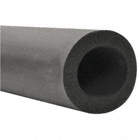quote:
Originally posted by PanteraDoug:
I sent my tanks out and had them chromed. That was 28 years ago. So far so good. Eventually the original steel tanks will rot through. I'll let you know how they work out for me?
In order to "high temp" ceramic coat, like on headers, the item needs to be able to stand 700 F degrees.
That's around the temperature +/-, that 50/50 lead solder will melt.
The stainless tanks which are 304, will virtually last forever.
The temperature is actually much lower. not looking to nit/pic, just clarifying

...Mark
Solder is a metal or metallic alloy used, when melted, to join
metallic surfaces together. The most common alloy is some
combination of tin and lead. Certain tin-lead alloys have a lower
melting point than the parent metals by themselves. The most
common alloys used for electronics work are 60/40 and 63/37.
The chart below shows the differences in melting points of some
common solder alloys.
Tin/Lead Melting Point
40/60 460ºF (230ºC)
50/50 418ºF (214ºC)
60/40 374ºF (190ºC)
63/37 364ºF (183ºC)
95/5 434ºF (224ºC)


 ...Mark
...Mark